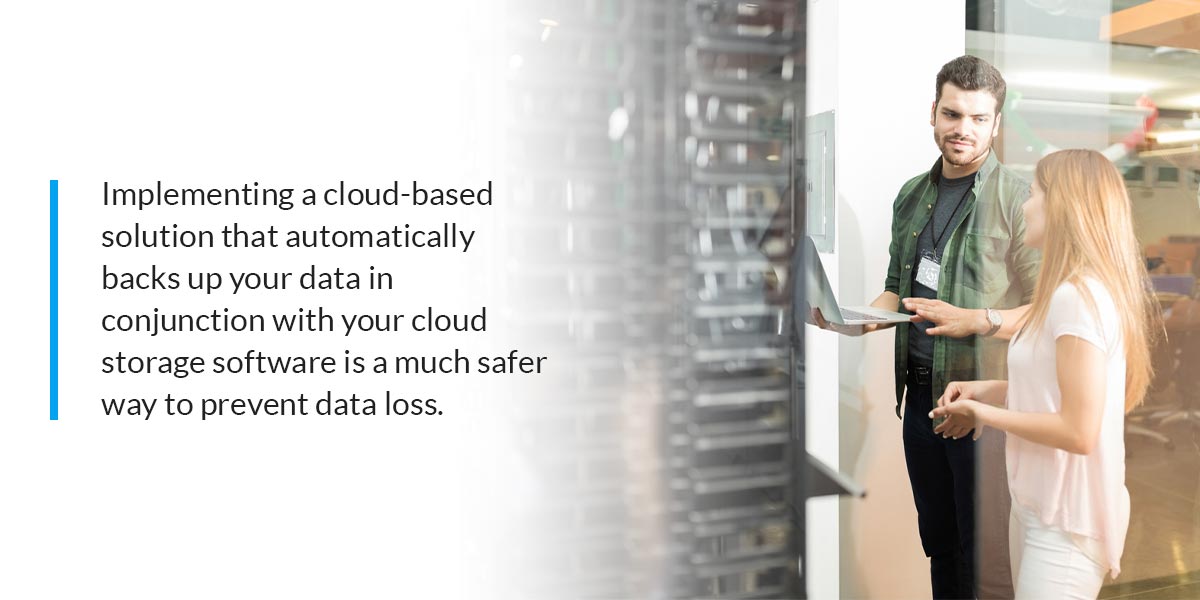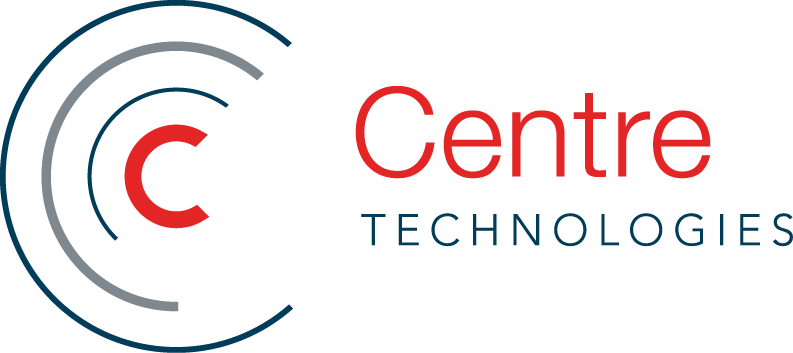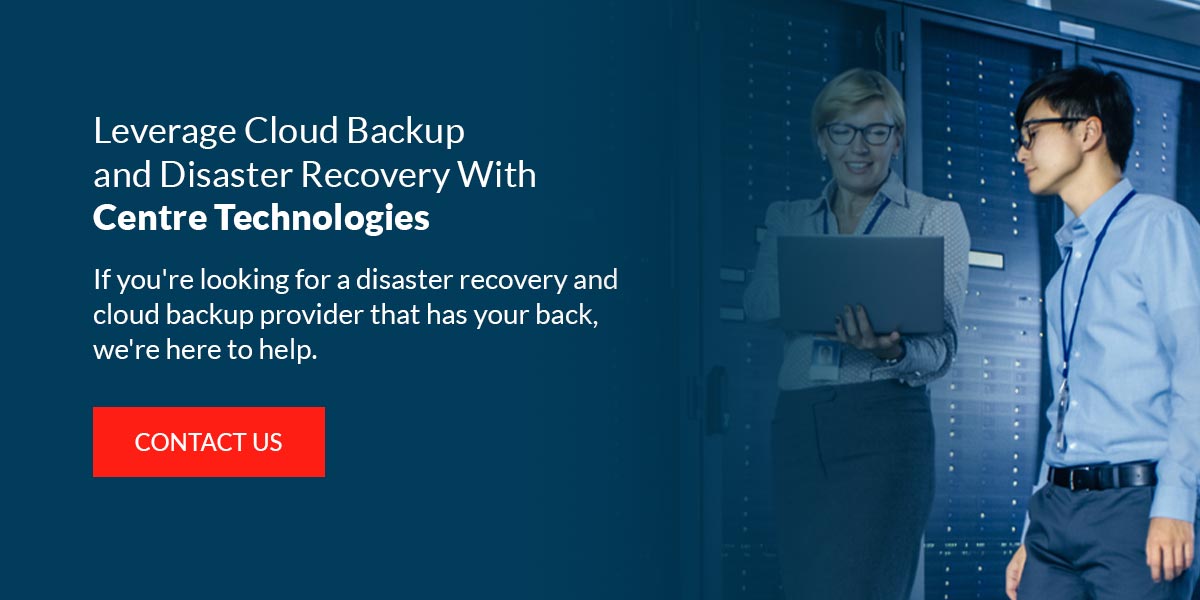Utilizing the Cloud for Data Backup Disaster and Recovery
The amount of data we create is increasing at a breathtaking rate. By 2025, global data consumption and creation are projected to grow to more than 180 zettabytes of information — for comparison, 64.2 zettabytes were created worldwide in 2020.
Therefore, businesses need to have the software and processes in place to keep their data safe from potential emergencies such as power outages, natural disasters and cyberattacks. Leveraging trustworthy cloud-based solutions is key to ensuring data security for your organization.
This article will explain how you can utilize third-party cloud backup and disaster recovery solutions to protect your business's most critical data.
What Is a Third-Party Cloud Backup?
A third-party cloud backup supplements your existing cloud storage by copying your data to another cloud storage system. These solutions provide businesses with a way to ensure continuous, complete backups of all of their files. Additionally, cloud backup services typically provide status reports to alert you of potential issues.
Using third-party cloud data backup is simple — you install your backup service provider's software on your devices. Then, at predetermined intervals, that software automatically copies your data into a separate cloud server, creating a complete backup of your company's data. The backup drive updates regularly, giving you secure access to your most recent files.
Types of Cloud Backup
There are four types of cloud backup solutions you can choose from:
- Public: A copy of your data is saved to a public cloud, such as those provided by Microsoft Azure or Amazon Web Services. Your chosen provider is only responsible for storing and safekeeping your data in this configuration — backup and protection software must come from your IT team.
- Cloud-to-cloud: If your data is already stored in the cloud, a vendor specializing in cloud-to-cloud (C2C) can copy your data to another cloud using their own software.
- Hybrid: A hybrid cloud backup configuration involves backing an on-premise copy of your data up to an off-premise cloud storage space.
- Managed: A cloud service provider (CSP) stores your backup in addition to providing extra services like data security and disaster recovery. Some CSPs include proprietary backup software as part of their service, but many others use integrated third-party solutions.
Cloud Storage vs. Cloud Backups
While cloud storage and cloud backups go hand-in-hand, they're different concepts.
Cloud storage is designed to add space to your company's existing storage system. Data stored in the cloud can be accessed and edited from anywhere, on any internet-connected device, so long as the user has the proper permissions. Typically, with cloud storage, you manually choose the files you want to save to the cloud and how often you want to do so.
A cloud backup is a copy of your data you can restore in the event of an emergency resulting in data loss. Cloud backup solutions run automatically and save all of your files and folders at regular intervals, ensuring data won't be lost. Because it's saved to the cloud, it's incredibly accessible — restoring your cloud data can take only a few minutes, whereas restoring data from a physical device can take hours or even days.

Why Use Cloud Backups?
Relying on your on-premise cloud software alone would've been sufficient years ago. Now, more advanced backup solutions are necessary for ensuring the most recent version of your data is always available, accessible and intact.
For example, software such as Microsoft 365 backs up your data, but it does so inconsistently — consistent backups are key to ensuring the safety and availability of your data even in emergencies. Implementing a cloud-based solution that automatically backs up your data in conjunction with your cloud storage software is a much safer way to prevent data loss.
The primary benefits of a cloud-based disaster recovery service include:
- Software integrations: Choosing a backup and recovery solution that integrates with major cloud services means you can protect critical business data without having to learn a complicated new system from scratch.
- Automated processes: Automated disaster recovery solutions run backups of your data on a consistent basis without human intervention, taking the guesswork out of backing up and accessing your stored data.
- Scalability: On-premise backup solutions work well until you run out of storage space. Purchasing new hardware to store data drives up energy and storage costs. With a cloud data backup solution, you can always scale up or down as your company's storage needs change.
- Continuity: Constantly available data reduces downtime, allowing your business to keep operating even during catastrophic situations like outages or natural disasters.
- Physical security: Storing backups using on-premise servers or drives leaves your data vulnerable to physical damage and cyberattacks. A third-party backup solution creates a copy of your data and stores it off-site, significantly reducing the risk of data loss.
- Built-in redundancy: CSPs mitigate data recovery issues by storing your data across multiple servers. If one server gets knocked out by an adverse event, you'll still have a copy available on another server.
- Cybersecurity controls: Many CSPs will include advanced security features like firewalls and end-to-end encryption to keep bad actors from accessing your data.
- Peace of mind: Third-party backup services take care of the technical complexities of protecting your data for you, letting you focus on running your business.
Using a cloud-based backup solution also makes it easier to adhere to your organization's data retention policy by eliminating human error — you'll be able to meet requirements for your organization and industry as a whole without hassle.
Considerations for Choosing a Cloud Backup Solution
If you're looking for the right cloud backup solution for your company, consider the following three factors:
- Budget: How much does your business have available to spend on data management? Look for a scalable solution that fits into your budget without sacrificing key features.
- Protection: Find out what security features each provider offers. Features like data retention management, continuous real-time monitoring and ransomware protection are some great examples of what to look for.
- User-friendliness: Your cloud solution should provide a clean, intuitive user experience — when your team feels comfortable using your solution, it'll be significantly easier to get company buy-in.
Leverage Cloud Backup and Disaster Recovery With Centre Technologies
At Centre Technologies, we strive to provide a backup recovery service that allows you to make the most of your cloud storage while maintaining confidence in the security of your data. If you're looking for a disaster recovery and cloud backup provider that has your back, we're here to help.
Our cloud-based Backup as a Service (BaaS) model includes Disaster Recovery as a Service (DRaaS), third-party software integrations and advanced security measures. Count on us to keep your data safe and available for when you need it most.
Contact us today for more information about our IT services.
Be a thought leader and share:
About the Author
Organizations partner with Centre to harness the benefits of cloud services and minimize the cost. Centre’s cloud services deliver comprehensive planning and dedicated support so customers can choose, navigate, and secure their cloud journey with confidence. With a focus on personalized solutions, Centre’s certified experts help customers achieve their business goals through public cloud services, private hosting options, or a combination of both. Learn more about Cloud Solutions »




